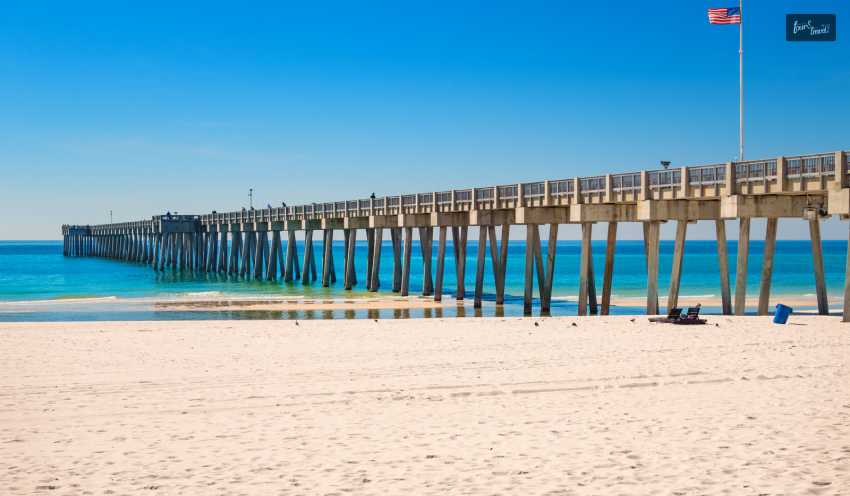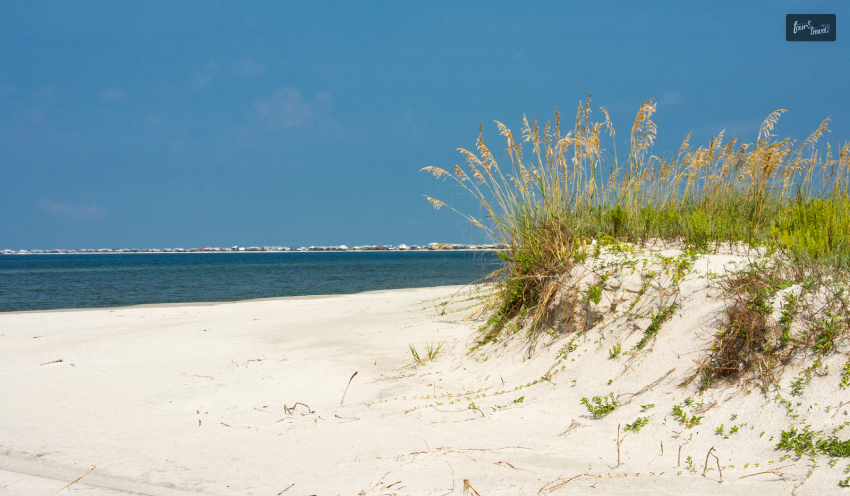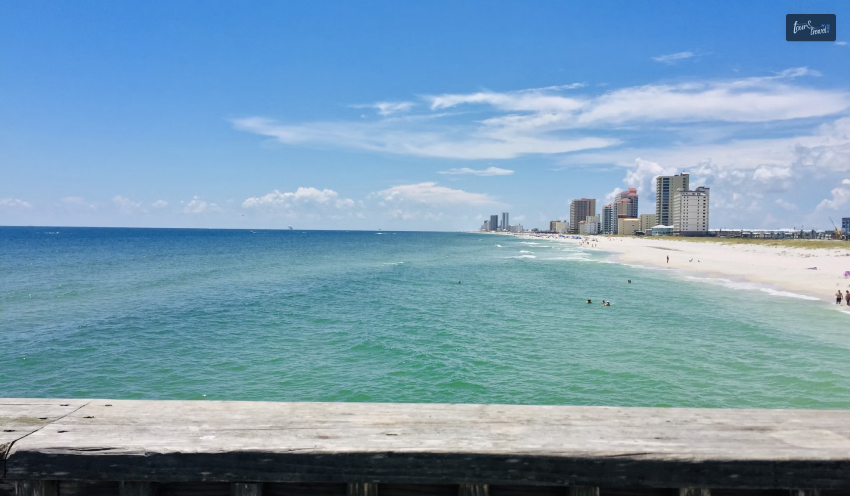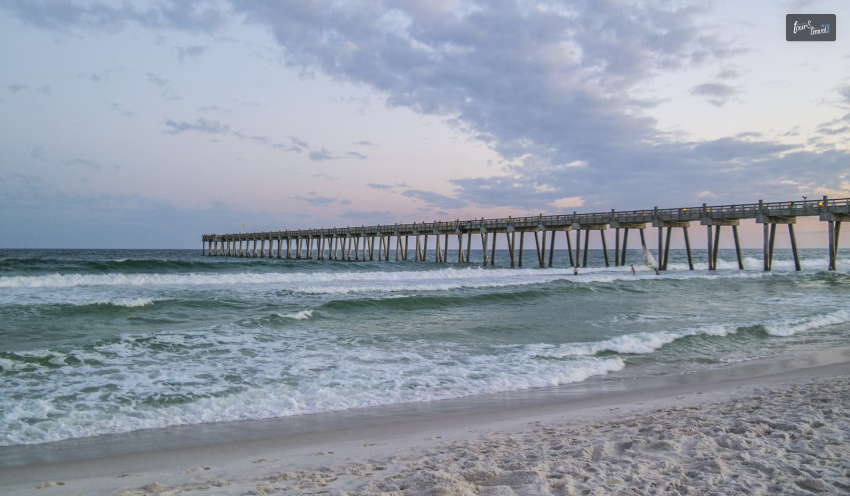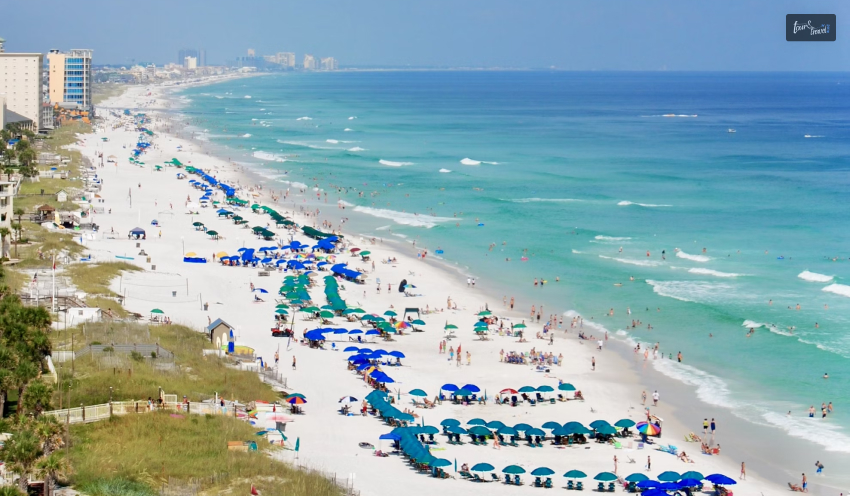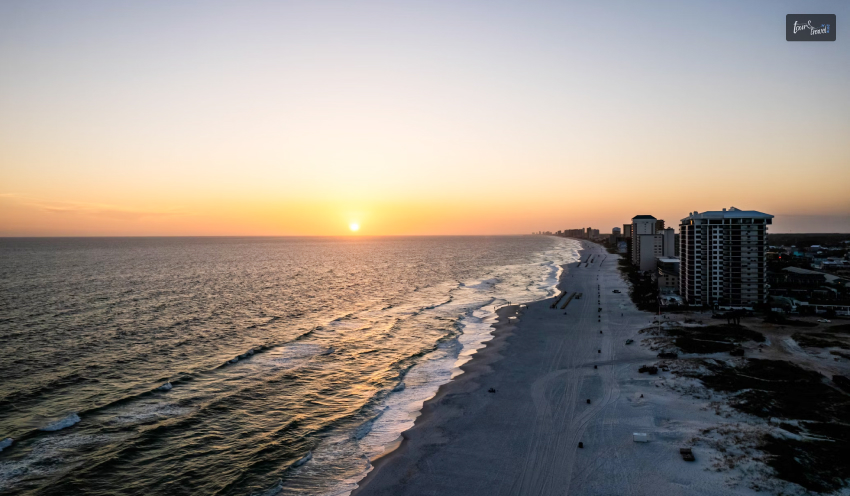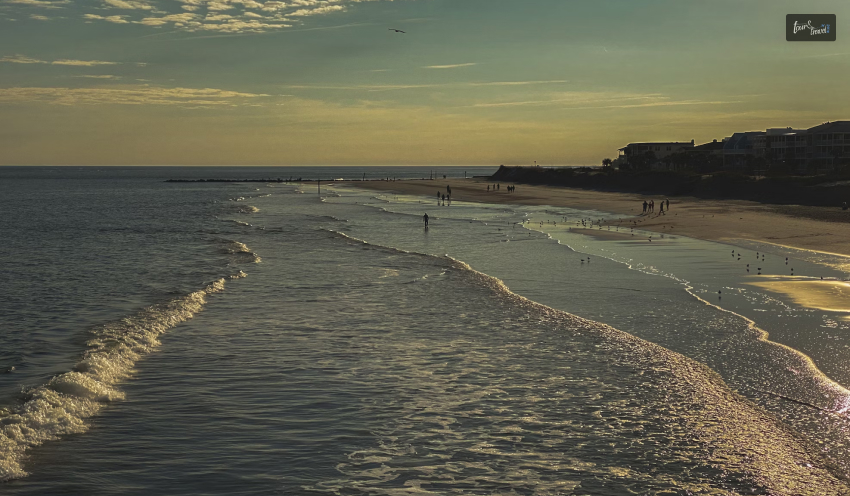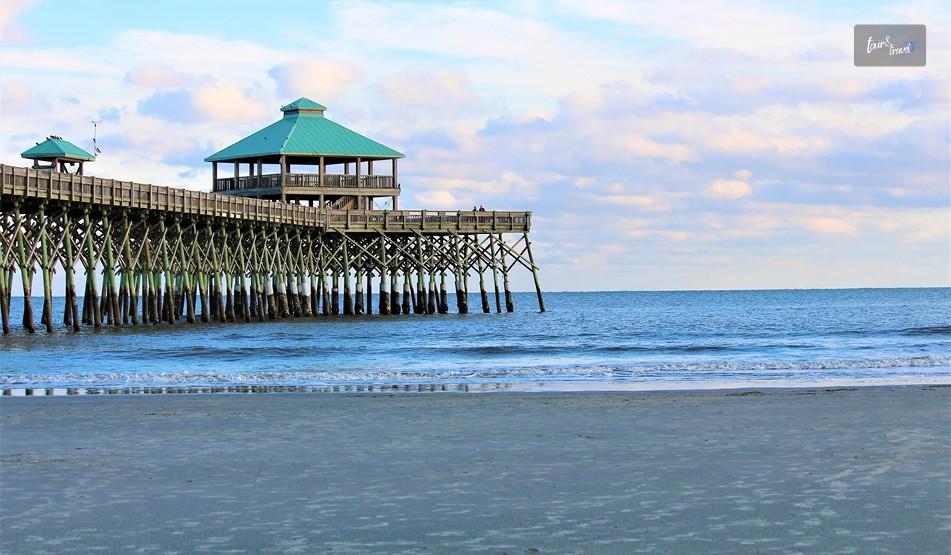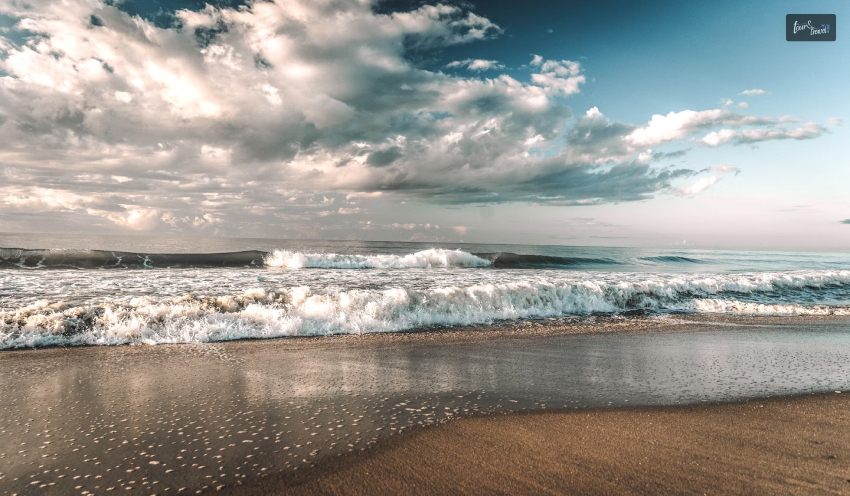What Is The Best Luang Prabang Food Tour? (With A Luang Prabang Food Tour Itinerary)
BY Sibashree Nov 4, 2025
I was having sticky rice with steamed hot freshwater fish cooked in banana leaves at Tamarind Restaurant. I took the first bite and I closed my eyes. It was a moment to cherish, to feel! The taste was similar yet distinctly different from what I usually have at home. Sticky rice is the soul of Lao cuisine, and it is related to community sentiment, as every village has its own rice field. And the fish was a game of perfect balance, and the spiciness was just right to titillate the taste buds, but not overpowering. Furthermore, as I explored the villages and went a little way away from the town center, I found food cooked in bamboo hollows. Another important aspect of Lao cuisine is the art of fermentation. From sun-dried fish and meat to fermented vegetables and salted lime, a Lunag Prabang food tour is an experience curated with love. Also, to cherish the authentic flavors of Laos, you have to try the street food here. It’s not Vietnamese, not Thai, but simply Laotian. I will talk about these street food delicacies shortly. However, before that, let’s find out what makes the food in Luang Prabang Special. Cooking Techniques And Ingredients That Make Food In Luang Prabang Special Food in Luang Prabang and Laos stands out for its distinctive techniques and ingredients. Check out the table below for a brief understanding. Techniques/IngredientsUse in Luang Prabang FoodFermentation• Key to Local Laos Flavors• Used in Picked Vegetables, Soy, and Fish SauceGrilling• Grilling over Charcoal Gives the Fish or Meat a Distinct FlavorHerbsCommon Herbs Used Are:• Mint• Lemongrass• Coriander• Kaffir Lime• GalangalSticky Rice Steaming• Rice is Cooked in Bamboo Baskets over Boiling Water. What Is The Best Street Food In Luang Prabang Laos? Have you tried something as “interesting” as a honeycomb cooked and charred in banana leaves? I have. And the smell of charcoal and honeycomb got blended with the whiff of lemongrass and grilled fish. This is what my senses caught first as the tuk-tuk dropped me at the morning market in Luang Prabang. Another thing I found special about the morning market was the presence of women in large numbers. Most vendors were women. I saw a lady whose face looked like a painting with all the creases, but her smile was all about silent resilience. I went to her stall and ordered a bowl of khao soi. It was bliss with the right amount of pork, herbs, and tomatoes. The sky was still pale pink, and I saw monks in saffron robes pass quietly collecting alms. My breakfast moment suddenly became about discovering everyday spirituality in the rhythm of food. I closely felt that breakfast is not just food for the people here, it’s about gratitude, humility, and connecting to the origin. Now, my stories of Luang Prabang will never end. It’s like the silent river that flows and does its magic by touching the lives on its route. So, let me share with you brief details about the best street food in Luang Prabang you cannot miss. 1. Khao Soi Luang Prabang Everyone loves Khao Soi in Luang Prabang. This pork soup with fermented soy and tomatoes is the perfect breakfast delicacy here. 2. Lao Sausage (Sai Oua) It is a pork sausage delicacy. In these sausages, the pork meat is infused with lemongrass, galangal, and herbs. 3. Sticky Rice (Khao Niew) You cannot imagine a complete Lao meal without sticky rice. I love to have sticky rice with fish. 4. Grilled Mekong Fish In Luang Prabang, they use fresh riverwater fish to make this dish. They marinate the fish using local herbs and grill it on charcoal for a distinct flavor. But do you know why grilled fish in Luang Prabang tastes even better? Mr. Somchai, a Mekong fish griller, said, “We catch fish at dawn and grill them by sunset. No freezer, just fire.” 5. Coconut Pancakes (Khanom Krok) The coconut pancakes are also the most unique in flavor. It has a crispy outer layer, which is complemented by the creaminess inside. These pancakes are served with spring onions. 6. Papaya Salad (Tam Mak Hoong) If you love the pungency of fermented fish, this crunchy salad will be your instant favorite. The raw papayas used in the salad give the dish the right crunch. Furthermore, the fermented fish sauce and the use of lemon add the right balance of flavors to the salad. 7. Larb (Laap) Larb is a comfort food. It’s a salad with minced meat, lime, mint, and rice powder. It has the right balance of salty, sour, and spicy flavors. It is the national dish of Laos and a common staple in everyday food and festivals. 8. Jaew Bong Jaew Bong is more like a condiment or a side served with dishes like fried seaweed. It is a smoky chilli paste with strong flavors of garlic and buffalo skin. 9. Fried Seaweed (Khai Paen) I liked the umami flavors of the fried seaweed or Khai Paen here. It was served with roasted sesame seeds, which added just the right amount of nutty balance to the dish. Also, the fried seaweed dish came with Jaew Bong. 10. Spring Rolls Spring rolls are my favorite, and I love the ones with fish stuffing the most. So, at Luang Prabang, a hub of freshwater fish, I had to try these spring rolls. I had the fried ones with the vermicelli, giving the outer layer the right amount of crunch. 11. Banana Roti Traditionally, a banana roti is a flatbread with banana slices and a condensed milk topping. The bread's crispiness balances the banana filling's moisture. The banana rotis are also served with chocolate syrup and sugar. I even tried the ones with an egg filling. 12. Grilled Chicken Skewers Now, the grilled chicken skewers here are different, mostly because of the prominent presence of lemongrass. And honestly, the amount of lemongrass used was a bit too much for my taste. However, it’s the way the locals love it. 13. Lao Coffee Lao coffee, for me, was like the desert I could have every day and not get bored with. It is rich and sweet as it uses condensed milk. However, the use of condensed milk does not overpower the strong aroma of coffee. 14. Fruit Shakes View this post on Instagram A post shared by Escaping Abroad (@escapingabroad) The food stalls in Luang Prabang have some amazing fruit shakes. I loved the dragon fruit shakes here the most. However, mango and pineapple shakes are also easily available. 15. Rice Cakes With Coconut If the morning market treated me with the best khao soi, the night market treated me with the best rice cakes with coconut. The Sun dipped, and the night market became alive with gold and red lanterns adorning the stalls. I could smell a mix of chili smoke, coconut milk, and sticky rice roasting on bamboo skewers. At a stall, I was sitting on a wooden bench with the locals, and I was waiting for my vegetarian buffet with stir-fried greens, bamboo shoots, and pumpkin curry to be served. Suddenly, the lady vendor of the stall smiled and nodded, and handed me a few rice cakes with coconut. The dessert was as delightful as the night air in Luang Prabang, and despite many requests, the lady did not take any money for the rice cakes. Rather, we started having conversations and shared a laugh. Some soft Lao music was being played at a distance. So, my dinner moment at the night market became an act of bonding. Almost one year later, I read an article about the distinct nature of food in Laos in the South China Morning Post. I could relate to what Saeng Douangdara, a Lao-American chef based in Los Angeles, said, “For Lao people, food holds a central place. It serves as a unifying force that brings people together.” Overall, I think the way people approach food here stems from the fact that it is a Buddhist land. It’s all about gratitude and mindful consumption. How To Take The Best Food Tours In Luang Prabang? (Some Ideas To Explore) My local guide and the tuk-tuk drivers completely curated my food exploration journey in Luang Prabang. I became friends with Seng, a local tuk-tuk driver. He said, “The best food isn’t in restaurants—it’s in the alleyways. Follow the locals.” My morning food tour in Luang Prabang to the market became all the more special by participating in the alms-giving ceremony. You have to experience the profound meaning behind the restraint and silence of the entire experience to understand why it is spiritually elevating. Also, the night market has a charm of its own, and the morning and night markets both need to be explored on foot. However, if you want a more luxurious tour, you can opt for something like Marriott Bonvoy Tours and Activities. Professional food guides conduct these tours, and the tour includes more than 15 tastings. It is a movable tour with many spots around the Old City. Furthermore, Asia Tours conducts a food tour in Luang Prabang with organic farm visits and learning to cook from a local chef. Also, Thrillophilia conducts a tour with a street food walk, cultural storytelling, and exploring vegetarian-friendly options. Street Food Map & Walking Route In Luang Prabang If you ask me, I will tell you to keep the Luang Prabang food tour spontaneous, and you must listen to your local guide. However, you can also follow this simple walking route map for a Luang Prabang food tour. Taking a tuk-tuk or a walk to the Morning Market near Wat Mai Heading to Ban Phanluang for grilled fish stalls Exploring the night market at Sisavangvong Road Trying local drinks and Lao Tapas at Utopia Bar Morning Vs. Evening Market Guide Luang Prabang Here is a brief comparison between the morning and night markets in Luang Prabang. CriteriaMorning MarketNight MarketTiming• Opens at 5:30 AM• Starts around 5:00 PMBest for• Fresh Produce• Herbs• Breakfast Items• Grilled Meat• Souvenirs• DessertsMust Try Items• Khao Soi• Sticky Rice• Coconut Pancakes• Lao Sausage• Banana Roti• Grilled Fish A 2-Day Luang Prabang Food Tour Itinerary Making an itinerary for a food tour is difficult, as you cannot rush it. The idea is not to consume as much as you can. It’s about cherishing the flavors, the cultural content, the bonding, the tradition, and the people behind it. Still, here is a 2-day itinerary for the Luang Prabang food tour. DaysActivitiesDay 1• Exploring the morning market at Phousi Road and participating in the alms-giving ceremony• Having coffee at Le Banneton• Lunch and cooking class at Tamarind Restaurant• Exploring the Night Market Food AlleyDay 2• Mekong Breakfast Cruise• Dara Market Visit• Lunch at Khaiphaen Restaurant• Visiting Whisky Village and trying Lao Lao Whisky• Dinner at Manda de Laos Luang Prabang Food And Buddhist Rituals The Tak Bat Ceremony, or the alms giving ceremony, makes the food tour in Luang Prabang associated with Buddhist rituals. Monks are offered fruits and sticky rice at dawn. Furthermore, food becomes the core of community celebration during festivals such as Pi Mai Lao or Lao New Year. In these festivals, the local people prepare food for monks. In addition, food tour organizers such as A Chef’s Tour organize a Luang Prabang Food Tour, including a Monk Blessing Ceremony. Vegetarian Options In Luang Prabang Food The vegetarian food options in Luang Prabang are many due to its Buddhist roots. You have to just say “Bor Sai Nyam” or “No Meat” to vendors to get vegetarian food. Here are the alternatives or vegetarian versions for the popular staples in Luang Prabang. Common FoodVegetarian AlternativeLarb• Options with mushrooms and tofu are available. Papaya Salad• Request not to use fish sauce in the dressingSpring Rolls• Use veg fillingsFruit Shakes• Avoid dairy products in the fruit shakes Sticky rice, the staple item in the Luang Prabang food, is already a vegan item. You can have it with any veg side or fried seaweed without the chilli and buffalo skin paste. Estimated Food Prices In Luang Prabang The budget of your food tour will depend on the places you eat. For example, the same dish brought from a street stall will cost at least 10000 LAK when you eat at a top-grade restaurant. Furthermore, some delicacies such as the coconut pancakes or coconut rice cakes may not be available at all restaurants. DishStreet Stall PriceRestaurant PriceKhao Soi10,000 LAK (\$0.50)30,000 LAK (\$1.50)Lao Sausage15,000 LAK (\$0.75)40,000 LAK (\$2.00)Grilled Fish25,000 LAK (\$1)60,000 LAK (\$3.00)Larb25,000 LAK (\$1.25)70,000 LAK (\$3.50) Things To Keep In Mind For A Delightful Luang Prabang Food Tour Arrive at the morning market before 6 AM to talk to the local vendors and have freshly made coconut pancakes, steamed sticky rice, and khao soi. Arriving before the crowd helps to have authentic conversations with the local vendors. You must follow where the locals are heading. A smart tip: Find the food stalls in the alleys near the temples. You will often notice long queues in front of those shops. Also, most street foods cost between 5,000 and 20,000 LAK. So, carry small change. Make sure that the vendor at the food stall you visit is wearing gloves, and use clean utensils. Keep your behavior respectful while taking part in an alms-giving ceremony or food tours blessed by monks. Luang Prabang Food Tour: Frequently Asked Questions (FAQs) Here are the frequently asked questions and answers about the Luang Prabang food tour. 1. What Is The Most Famous Street Food In Luang Prabang? Khao Soi, or the pork noodle soup, is the most famous street food in Luang Prabang. It is a popular breakfast item. However, it is a wholesome dish with pork, tomatoes, and subtle flavors. Unlike traditional Thai Khao Soi, the Luang Prabang Khao Soi does not use coconut-based curry. Instead, it has fermented soybean paste. 2. Is Street Food Safe In Luang Prabang? Yes, street food is safe in Luang Prabang. However, you have to visit food stalls that locals frequent. Also, drink bottled water. Most importantly, when trying local liquors at the Whisky Village or local stalls, take your guide's suggestions. 3. Can I Join A Food Tour As A Vegetarian? Yes, you can join a food tour as a vegetarian. You can always replace the minced pork or fish in springroll stuffing or choose tofu and mushrooms in larb. Just mention, Bor Sai Nyam or no meat to the vendor. In addition, you can customize the spice level in your food with adjustments in spice levels or ingredients.

